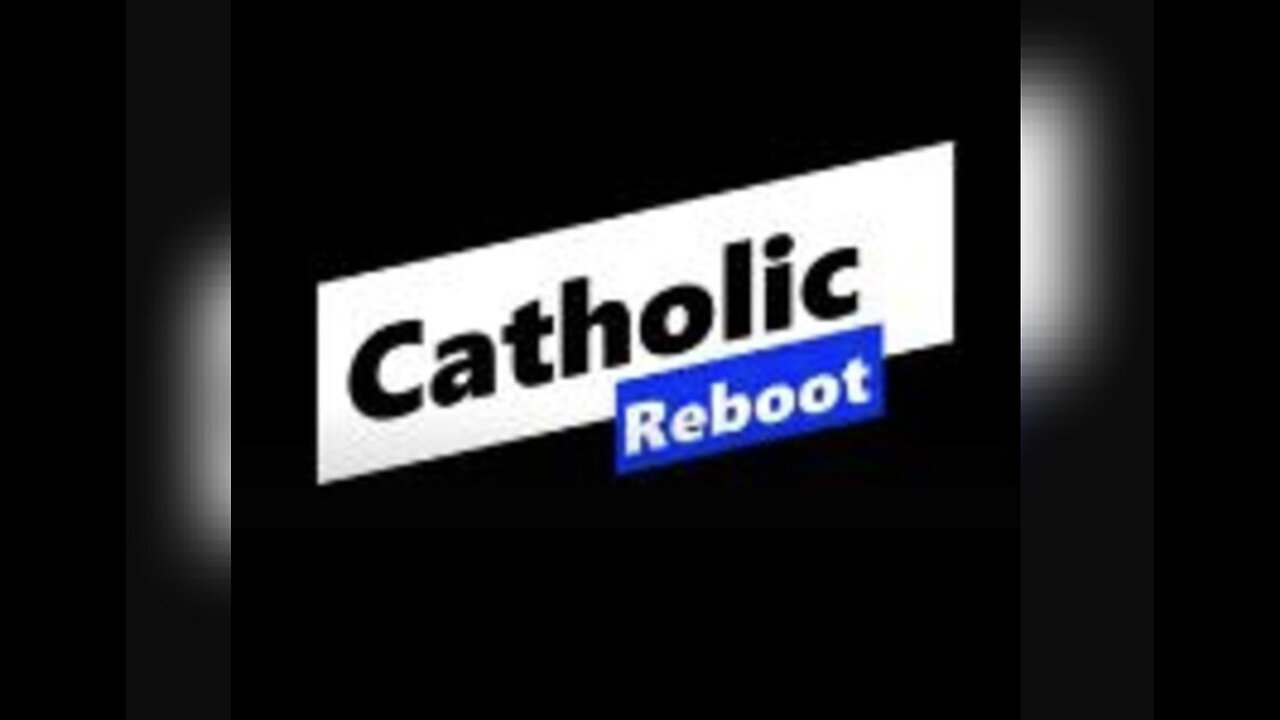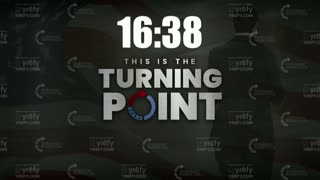Premium Only Content

Episode 3206: Cremation, Resurrection, and the Integrity of the Body
www.catholic-reboot.com
Nightly Zoom Coordinates for Rosary:
Meeting ID: 865 8978 0399
Passcode: Wjjv4960!
Speak Lord for your Servant is Listening
Book Recommendation of the Day
True Devotion to Mary by Saint Louis-Marie Grignion de Montfort (1712; published 1843)
While not focused solely on Mary’s birth, this classic promotes a deep, sacrificial devotion to Mary. It leaves a powerful indirect imprint on understanding her role in salvation history
Cremation, Resurrection, and the Integrity of the Body
Today we confront a question that troubles many Catholics: What happens to the bodies of those who are cremated? Will they rise on the Last Day?
Just because things are possible does not mean they are approporaite. Cremation has become common in modern society, but its prevalence does not erase the deep concern it raises for Catholics. The Church has always taught reverence for the body, not only because it houses the soul during life, but because it will one day share in eternal glory.
We will explore what the Resurrection of the Body means, why the Church long forbade cremation, the dangers of modern concessions, the witness of the saints, and finally, how Catholics today can give clear testimony to our belief in eternal life.
Segment 1: The Catholic Doctrine of the Resurrection
The Apostles’ Creed proclaims: “I believe in the resurrection of the body.” This is no mere symbol it is dogma.
• Christ Himself is the model: His Resurrection was bodily. He ate, spoke, and showed His wounds, yet His body was glorified and incorruptible.
• Sacred Scripture: St. Paul writes in 1 Corinthians 15:53, “This corruptible must put on incorruption, and this mortal must put on immortality.” The very body that is buried will rise, transfigured.
• The Fathers of the Church:
o St. Augustine insists that “not a single hair of the head shall perish” all will be restored by God’s omnipotence (City of God, Book 22).
o St. Thomas Aquinas teaches that even when matter is dispersed through decay, fire, or the sea God, the Author of Creation, will reassemble the body in its integrity (Summa Theologica, Suppl., Q79).
Thus, whether one’s body is buried intact, lost in battle, or consumed by fire, the Resurrection is certain. God’s power admits no obstacles.
Segment 2: The Traditional Prohibition of Cremation
Although God can restore any body, the Church long prohibited cremation. Why? Because Christian burial is itself a profession of faith.
• Early Christians:
o They rejected pagan cremation, which symbolized despair of the afterlife.
o In the catacombs, they laid the dead in reverent rest, affirming the body “sleeps in Christ” awaiting the trumpet of the Resurrection.
• Canon Law:
o The 1917 Code (canon 1203) forbade cremation, except in cases of plague or necessity.
o Those who requested cremation to deny resurrection were denied Christian burial.
• Papal Teaching:
o Pope Pius XII reminded the faithful that burial imitates the burial of Christ Himself laid reverently in the tomb.
o The burial liturgy with its prayers, incense, and sprinkling of holy water honors the body as God’s creation and proclaims hope in the Resurrection.
Thus, the prohibition was not about limiting God’s power, but about safeguarding Catholic witness to the truth of the Resurrection.
Segment 3: Modern Concessions and Their Dangers
In 1963, the Holy Office permitted cremation under conditions that it not be chosen to deny Catholic dogma. The modern Catechism (CCC 2301) allows cremation but warns it must not contradict faith in the Resurrection.
Yet today, cremation has often led to abuses:
• Scattering ashes at sea or in nature, as if the body has no sacred destiny.
• Keeping urns on mantels, turning remains into decorations.
• Even making jewelry from ashes, a practice that trivializes the human body.
These trends reduce the body to mere matter, ignoring its dignity as a temple of the Holy Ghost (1 Corinthians 6:19).
Here lies the danger: the permission intended for necessity has become normalized and often divorced from reverence. Pope Leo XIV has rightly reminded the faithful that resurrection is not hindered by cremation, yet the practice itself can erode Catholic belief if treated lightly.
Segment 4: The Witness of the Saints
The lives of the saints give us powerful lessons.
• St. Polycarp: When burned at the stake, his remains were gathered by the faithful and treated as precious relics. His resurrection is certain, though his body was destroyed.
• St. John Chrysostom: Preached that even if the body is destroyed, it shall be raised incorruptible, glorified by Christ’s power.
• Scripture: St. Paul affirms in 1 Corinthians 15:42–44 that “It is sown in corruption, it shall rise in incorruption.”
The paradox is clear: destruction does not prevent resurrection. But the saints and martyrs remind us that how we treat the body testifies to our faith.
Segment 5: A Traditional Catholic Response Today
So how should Catholics respond today?
1. Prefer Christian Burial: Burial is the clearest witness to our hope in the Resurrection. It aligns us with Christ, who was buried, and with centuries of tradition.
2. If Cremation Occurs:
o Ashes must always be interred in a Catholic cemetery.
o They must never be scattered, divided, or kept as personal keepsakes.
o Families should insist upon the full funeral rites of the Church.
3. Catechesis is Essential: Priests and lay faithful alike must teach that burial reflects Catholic belief, while cremation though permitted carries spiritual risks.
Above all, Catholics must keep their eyes fixed on Christ’s empty tomb, the sure pledge of our own resurrection.
Why Cremation Entered the Catholic Church
For nearly two millennia, the Catholic Church universally forbade cremation. The prohibition was tied to the Resurrection of the Body and the witness of Christian burial. The shift came only in the 20th century, under pressure from secular governments and modernist trends:
• Civil pressures: In the late 19th and early 20th centuries, governments in Europe began promoting cremation as more “hygienic” and “economical.” In many cases, this was tied to a secularist agenda of separating society from the Church.
• 1963 Holy Office Instruction (Piam et Constantem): For the first time, Catholics were permitted cremation if it was not chosen to deny the Resurrection. This was a pastoral concession, not a doctrinal endorsement. It was presented as a “tolerated practice,” but, as often happens, what is tolerated quickly becomes normalized.
• Post-conciliar catechesis: After Vatican II, many funeral homes and diocesan instructions stopped stressing that burial was the norm. The Catechism of the Catholic Church (1992) permits cremation, but only so long as it expresses belief in the Resurrection (CCC 2301). In practice, this has weakened the faithful’s understanding of Catholic tradition.
Thus, cremation entered through pastoral accommodation rather than doctrinal development and it has since become widespread, often without catechetical clarity.
2. Pagan and Masonic Roots of Cremation
Cremation has historically been non-Christian, often deliberately anti-Christian.
• Pagan Rome: Cremation was a widespread Roman custom, associated with the belief that the body was worthless after death. Early Christians rejected this, choosing burial to proclaim the resurrection. The catacombs themselves are monuments of resistance to pagan cremation.
• Freemasonry: By the 19th century, Freemasons openly promoted cremation in Europe. Why? Because it was a direct attack on Catholic doctrine of the Resurrection. Cremation became a symbol of “liberation” from “superstition.” Masonic funeral rites often encouraged scattering ashes, precisely to deny the sacredness of the body.
• Symbolism of destruction: Both pagans and Masons saw the burning of the body as a declaration that man is merely matter, returning to dust without hope. In contrast, Christian burial imitates Christ’s entombment and expresses faith in the body’s destiny for glory.
This is why the Church’s historic opposition to cremation was not about God’s ability to raise the dead it was about resisting the worldview behind cremation. It is no accident that it was Freemasonry and secular governments that pushed hardest for its acceptance.
3. The Stark Parallels with the Incorrupt Saints: St. Gemma of Lucca
Against this backdrop, the incorrupt saints stand as radiant witnesses against the reduction of the body to ashes.
• St. Gemma Galgani (of Lucca): A mystic and stigmatist who died in 1903, her body remains incorrupt. Pilgrims come to venerate her remains as visible testimony of God’s power to sanctify and preserve the body destined for resurrection.
• Incorruption as a miracle: God grants incorruption to some saints not merely as a personal privilege, but as a sign to the Church of the sacredness of the human body. It is a silent proclamation of the Resurrection of the Body.
• The stark contrast:
o Cremation reduces the body to ash, declaring it disposable.
o Incorruption preserves the body, declaring it sacred.
o Cremation echoes pagan despair and Masonic rebellion.
o Incorruption reflects divine glory and Christian hope.
When the faithful kneel before St. Gemma’s incorrupt body, they are confronted with a truth the modern world wants to erase: our bodies matter. They are not husks to be burned, but temples of the Holy Ghost, marked by the sacraments, and awaiting resurrection.
Conclusion: The Choice of Witness
Cremation entered the Church as a concession, but its origins are deeply entwined with pagan disbelief and Masonic rebellion. The faithful must see that every choice at death is a witness: either to the secular worldview that dismisses the body, or to the Catholic proclamation that “the body sleeps in Christ” and shall rise in glory.
The incorrupt body of St. Gemma of Lucca and countless other saints is God’s way of answering pagan fire and Masonic ash with divine light and incorruptibility.
Mary, Seat of Wisdom and Mother of the Word Made Flesh”
Epistle – Proverbs 8:22–35
"The Lord possessed me in the beginning of his ways, before he made anything from the beginning. I was set up from eternity, and of old before the earth was made... When he prepared the heavens, I was present... Blessed is the man that heareth me, and that watcheth daily at my gates, and waiteth at the posts of my doors. He that shall find me, shall find life, and shall have salvation from the Lord."
Reflection on the Epistle
Traditionally, these words of Wisdom are applied both to Christ, the Eternal Word, and to Mary, who is the Seat of Wisdom. From all eternity, God ordained her role in salvation history. She was conceived without sin, chosen as the Immaculate Mother of Christ, and prepared to be the dwelling place of the Word made flesh.
Mary’s birth is thus a sign of God’s providence. Before the foundations of the world, He willed that His Son should take flesh from her spotless womb. Just as Wisdom was present before creation, so Mary’s existence was foreseen in the eternal plan of redemption.
The Epistle calls us to “watch daily at her gates.” How fitting this is for Catholics devoted to Our Lady. To love her, to seek her intercession, to imitate her purity and obedience is to find the path of life, because she always leads us to her Son.
Gospel: Matthew 1:1–16
"The book of the generation of Jesus Christ, the son of David, the son of Abraham... And Jacob begot Joseph the husband of Mary, of whom was born Jesus, who is called Christ."
Reflection on the Gospel
At first, the genealogy may seem dry to modern ears, but the Church places it here to reveal a great truth: the Incarnation is not myth but history. God entered time, into a specific people, into a family line that led to Mary.
The long list of names tells us that salvation is not abstract. It unfolds through generations, through human weakness, through sinners and saints alike, until it culminates in Mary, the pure Virgin, chosen to be the Mother of God.
And so the Gospel ends not with man, but with Mary—"of whom was born Jesus." All of salvation history reaches its climax in her “Fiat,” her yes to God, which made possible the birth of our Savior.
From a traditional Catholic perspective, this reminds us that God does not bypass the natural order. Grace builds on nature. The genealogy shows that God sanctifies family lines, history, and flesh itself. Mary, in her nativity, reveals the dignity of creation and its fulfillment in Christ.
Feast of the Nativity of the Blessed Virgin Mary
The Nativity of Mary is one of the great Marian feasts of the Church. It reminds us that her coming was a cause of joy for the world, because she would give birth to the Redeemer. The saints often compared her birth to the rising of the dawn before the day: a quiet beginning that ushers in the light of salvation.
St. Andrew of Crete wrote: “The present festival is the door to salvation and the beginning of the feasts. Today the bonds of barrenness are loosed, and the gates of the Virgin are opened. Today begins the great mystery of the Incarnation.”
Mary’s nativity calls us to honor her as Mother, to imitate her in humility and purity, and to rejoice in God’s providence, who prepared her from all eternity.
Application for Today
• Honor Mary as the Seat of Wisdom: Seek her guidance daily in prayer; she will always lead you to Christ.
• Trust in God’s providence: Just as He prepared Mary for her mission, so He prepares us for ours. Nothing in our lives is outside His saving plan.
• Imitate Mary’s virtues: Purity, humility, obedience—these are the surest paths to holiness.
• Celebrate her nativity with gratitude: For through her, the world received the Savior.
Conclusionary Prayer
O God, who willed that the Blessed Virgin Mary should be born to bring joy to the world and to prepare the way for Christ, grant that we may honor her nativity with fitting devotion and imitate her virtues with fidelity. Through her maternal intercession, may we always find life and salvation in Thy Son, Our Lord Jesus Christ.
Blessed Virgin Mary, pray for us.
Sacred Heart of Jesus, have mercy on us.
St. Joseph, guardian of the Holy Family, intercede for us.
-
 2:32:12
2:32:12
The Charlie Kirk Show
7 hours agoTPUSA Presents This is The Turning Point Tour LIVE with Michael Knowles
123K59 -

Drew Hernandez
11 hours agoDISNEY CUCKS FOR KIMMEL & ADDRESSING THE CHARLIE KIRK MEMORIAL AFTERMATH
43.1K15 -
 1:02:28
1:02:28
Flyover Conservatives
10 hours agoThe Most Overlooked Way to Fight Abortion (It’s Not Protests) - Robert Netzly; Why Triple-Digit Silver is Coming - Dr. Kirk Elliott | FOC Show
35K3 -
 1:55:33
1:55:33
Glenn Greenwald
9 hours agoDeceitful Hysteria over Tucker's Speech on Kirk; IDF Funder Larry Ellison to Take Over CBS, Paramount, and now TikTok; U.S. Embraces Leading Al-Qaeda Terrorist | SYSTEM UPDATE #519
194K89 -
 34:40
34:40
Donald Trump Jr.
11 hours agoWe Will Make Charlie Proud | TRIGGERED Ep.276
210K90 -
 1:01:49
1:01:49
BonginoReport
9 hours agoErika Kirk Forgives Charlie’s Assassin - Nightly Scroll w/ Hayley Caronia (Ep.139)
115K103 -
 1:54:19
1:54:19
megimu32
7 hours agoOn The Subject: Rush Hour | Would It Be Cancelled Today?
43.3K6 -
 1:24:12
1:24:12
Katie Miller Pod
9 hours ago $2.93 earnedEpisode 7 - Jillian Michaels | The Katie Miller Podcast
82.1K5 -
 13:09:57
13:09:57
LFA TV
1 day agoLFA TV ALL DAY STREAM ! | MONDAY 9/22/25
243K49 -
 1:02:10
1:02:10
LIVE WITH CHRIS'WORLD
8 hours agoLIVE WITH CHRIS'WORLD - Key Takeaways From Charlie Kirks Memorial
32.5K